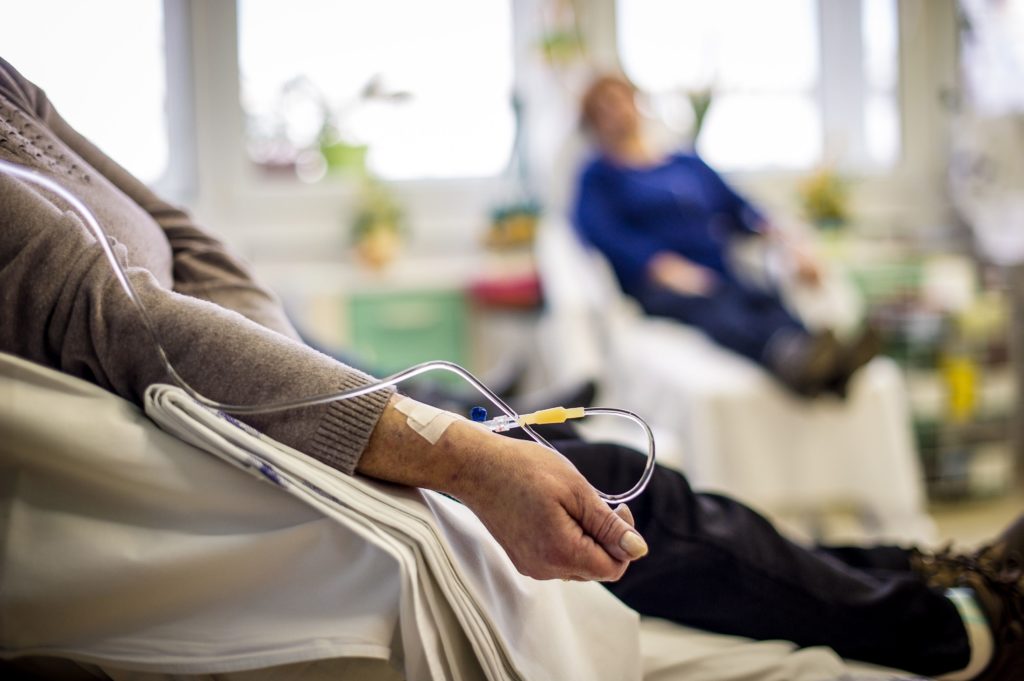
Recently Diagnosed or Relapsed? Stop Looking For a Miracle Cure, and Use Evidence-Based Therapies To Enhance Your Treatment and Prolong Your Remission
Multiple Myeloma an incurable disease, but I have spent the last 25 years in remission using a blend of conventional oncology and evidence-based nutrition, supplementation, and lifestyle therapies from peer-reviewed studies that your oncologist probably hasn't told you about.
Click the orange button to the right to learn more about what you can start doing today.
- You are here:
- Home »
- Blog »
- Multiple Myeloma »
- New Dx Myeloma- Prehabilitation
New Dx Myeloma- Prehabilitation

“Prehabilitation evidence has grown across several areas of oncology care delivery demonstrating that a multi-modal rehabilitative intervention, delivered prior to oncology-direct therapies, leads to better functional outcomes…”
Hi David- I diagnosed 1/22 with Stage 1 Multiple Myeloma. I opted to work with a physician trained in alternative cancer therapies.
I worked with the RGCC & followed their recommended protocol. I did 15 IV’s of Salicinium & then stayed on the oral version until 11/22. My light chain #’s had increased significantly & I was very anemic.
I met with my oncologist 11/22 and started Revlimid, Velcade, Daratumumab, & Dexamethasone.
I started this regimen on 11/22/22. My freelight chain values- kappa and lambda, significantly decreased and now they want me scheduled for the transplant.
I also started to take Fenbendazole 12/14/22. I have always wanted to stay away from the radiation & chemotherapy.
Any input as to how to proceed is greatly appreciated. Thank you! Susan
Hi Susan-
Let me say at the outset, I have little experience with Fenbendazole- either way. No published studies about fenben and myeloma that I know of.
- MM Survivor
- MM Cancer Coach
- Director PeopleBeatingCancer
Prehabilitation is the Gateway to Better Functional Outcomes for Individuals with Cancer
“Prehabilitation is a clinical model that introduces components of rehabilitation to patients prior to undergoing intensive medical interventions, such as surgery, in order to optimize function and improve tolerability to the intervention.
Cancer care introduces a continuum of sequential or concurrent intensive anti-neoplastic medical interventions that are known to be detrimental to a patient’s function.
Prehabilitation evidence has grown across several areas of oncology care delivery demonstrating that a multi-modal rehabilitative intervention, delivered prior to oncology-direct therapies, leads to better functional outcomes and improves important endpoints associated with surgery and cancer treatment.
This commentary article provides a brief history of the emergence of prehabilitation in cancer care delivery, reviews the current evidence base and guidelines for prehabilitation, and offers insights for future implementation of this model as a standard in oncology care.
A prehabilitation program is an optimal starting point for most patients undergoing anti-neoplastic therapy as it serves as a gateway to improving functional outcomes throughout the cancer continuum.
Future research in prehabilitation should aim to reach beyond measuring functional outcomes and to explore the impact of this model on important disease treatment endpoints such as tumor response to oncology-directed treatment, impact on treatment-related toxicities, and disease progression…”
Treatment of Myeloma: Cure vs Control
“Although not often openly acknowledged, “cure vs control” is the dominant philosophical difference behind many of the strategies, trials, and debates related to the management of myeloma. Should we treat patients with myeloma with multidrug, multitransplant combinations with the goal of potentially curing a subset of patients, recognizing that the risk of adverse events and effect on quality of life will be substantial? Or should we address myeloma as a chronic incurable condition with the goal of disease control, using the least toxic regimens, emphasizing a balance between efficacy and quality of life, and reserving more aggressive therapy for later?
To be sure, if cure were known to be possible (with a reasonable probability) in myeloma, it would undoubtedly be the preferred therapeutic goal of most patients and physicians. But this is not the case.
Myeloma is generally not considered a curable disease; however, new definitions of cure have been suggested, including operational cure, which is defined as a sustained complete response (CR) for a prolonged period.1,2 Cure vs control is debated because the strategies currently being tested are not truly curative but rather are intended to maximize response rates in the hope that they will translate into an operational cure for a subset of patients…”


